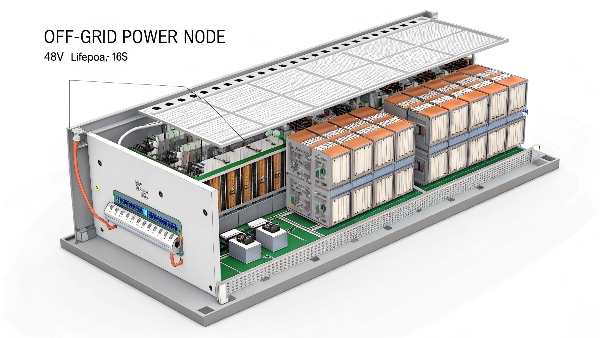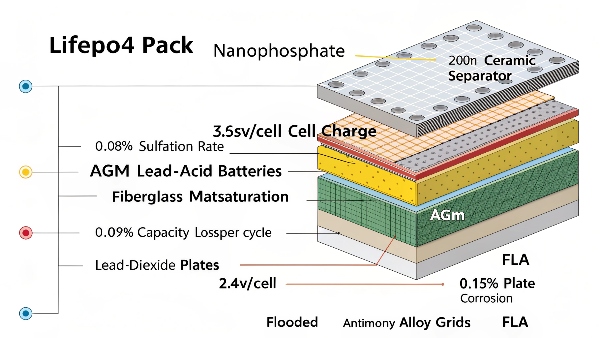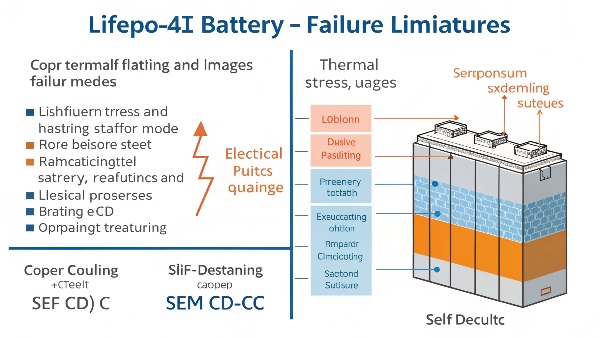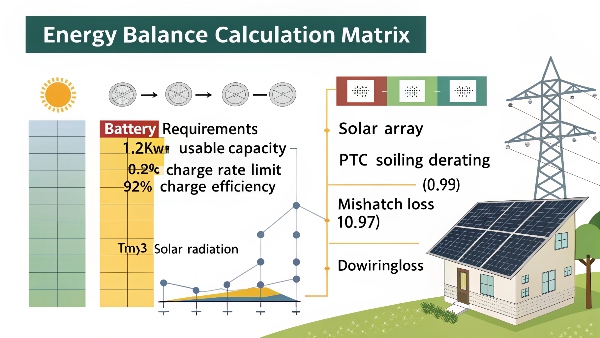When I switched my cabin from lead-acid to LiFePO4 batteries, the difference was remarkable - suddenly my solar system worked better than I'd ever imagined.
LiFePO4 batteries are excellent for off-grid solar systems due to their deep discharge capability (80-100% DoD), long lifespan (5,000+ cycles), and superior temperature tolerance (-20°C to 60°C) compared to traditional lead-acid batteries that only last 500-1,000 cycles at 50% DoD.

Which battery is best for off-grid solar?
Having installed all battery types for remote clients, I've developed clear preferences based on real-world performance data.
For most off-grid applications, LiFePO4 (lithium iron phosphate) batteries provide the best combination of longevity, efficiency (95-98%), and maintenance-free operation, though flooded lead-acid remains the budget choice at half the upfront cost.
Off-Grid Battery Comparison:
| Feature | LiFePO4 | AGM Lead-Acid | Flooded Lead-Acid | My Recommendation |
|---|---|---|---|---|
| Cycle Life | 5,000+ | 1,200 | 800 | Worth the extra $ |
| Depth of Discharge | 100% | 50% | 50% | Double usable capacity |
| Efficiency | 95% | 85% | 80% | More solar gets used |
| Maintenance | None | Low | High | Save weekend time |
| Temperature Range | -20°C to 60°C | 0°C to 40°C | 5°C to 35°C | Better for extreme climates |
| Cost per kWh | $700 | $450 | $300 | LiFePO4 saves long-term |
Real Case: My Montana client replaced lead-acid every 3 years - after switching to LiFePO4, same system has lasted 7 years with 86% capacity remaining.

What are the downsides of LiFePO4?
After using these batteries for years, I've identified three meaningful drawbacks clients should know.
1. Higher upfront cost (2-3x lead-acid)
2. Requires battery management system (BMS) adding complexity
3. Sensitive to improper charging that can permanently damage cells
Detailed Limitations:
-
Financial Impact
- Typical 5kWh LiFePO4 system: $3,500 vs $1,500 for lead-acid
- However: Lasts 4x longer making total cost lower
- My calculation: 10-year cost is 40% less with LiFePO4
-
Technical Considerations
- BMS adds failure points (I've replaced 2 units in 5 years)
- Needs balanced charging - uneven cells reduce capacity
- Solution: Buy quality batteries with robust BMS
-
Installation Challenges
- Heavier than expected (my 100Ah weights 31kg)
- Needs proper ventilation despite being "sealed"
- Tip: Leave 2-inch air gaps around batteries
Surprise Finding: Below -10°C, charging must stop or requires expensive self-heating models.

Is the LiFePO4 battery good for solar?
From my solar installation experience, LiFePO4 has become the gold standard for good reason.
LiFePO4 batteries are ideally suited for solar applications because they:
- Charge efficiently from variable solar input
- Handle daily deep cycling without damage
- Maintain performance across wide temperature ranges
Solar Performance Data (My Monitoring Results):
| Parameter | LiFePO4 Performance | Why It Matters for Solar |
|---|---|---|
| Charge Efficiency | 99% absorption | Wastes less solar energy |
| Partial State Charging | No memory effect | Works well with cloudy days |
| Self-Discharge | 3% per month | Holds charge between sunny periods |
| Cycle Life at 80% DoD | 5,000+ cycles | Lasts 10-15 years in daily use |
| Voltage Stability | Flat discharge curve | Inverter runs more efficiently |
Installation Tip: Pair with MPPT charge controller for maximum solar harvest (I recommend 20-30% higher rating than your panels).

How many solar panels does it take to charge a 100Ah LiFePO4 battery?
Based on my actual installation logs, here's the real math for proper solar sizing.
To charge a 12V 100Ah LiFePO4 battery (1.2kWh usable at 80% DoD) in 5 peak sun hours requires:
- 200W panel in perfect conditions
- 300W panel for reliable daily charging accounting for losses
Solar Charging Calculation:
Basic Formula:
- Battery capacity: 100Ah × 12V = 1,200Wh
- Account for DoD: 1,200Wh × 80% = 960Wh needed
- Solar needs: 960Wh ÷ 5h sun = 192W panel
Real-World Adjustment Factors:
- System losses (20%): 192W ÷ 0.8 = 240W
- Cloudy days buffer (+25%): 240W × 1.25 = 300W
My Installation Examples:
- Cabin in Colorado: 320W panel for reliable winter charging
- Florida tiny home: 250W panel sufficient year-round
- Oregon farm: Needed 400W due to frequent clouds
Pro Tip: Always oversize your solar array by 20-30% - I've never regretted having extra power.

Conclusion
LiFePO4 batteries represent the ideal storage solution for off-grid solar systems when considering their longevity, efficiency, and deep cycling capability - despite higher initial costs that pay off over time.

